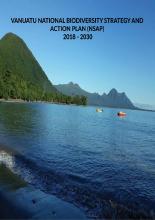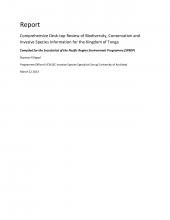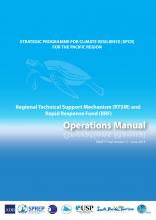Operations Manual - Regional Technical Support Mechanism (RTSM) and Rapid Response Fund (RRF)


SPREP Publications, Climate Change Resilience
Available Online
The Regional Technical Support Mechanism (RTSM) and Rapid Response Fund (RRF) is a collaborative undertaking of all Council of Regional Organisations in the Pacific (CROP) agencies and their associated development partners and donors. It is a true reflection of the Pacific island region, which promotes the spirit of cooperation and collaboration. The establishment of the RTSM and RRF is a step towards a ‘transformative change’ that is taken by the CROP agencies, to efficiently serve the priority and needs of Pacific Island Countries and Territories in relation to climate change adaptation and mitigation The purpose of this Manual is to guide the members of the RTSM Project Committee (PC), the Working Arm of the CEO Subcommittee on Climate Change and Disaster Resilient Development (WARD) and the RTSM Coordinator (RC) on the operations of the RTSM and associated RRF. It sets out the standards of probity, transparency and accountability that contributors and potential contributors to the Fund expect in the governance and operations of both the RTSM and RRF. The Manual includes an RTSM & RRF Policies and Procedures which lists the types of assistance available, and how to request assistance under the RRF. As part of the ‘scaling up of good practices’ approach, the standards as set out in the Manual also provide an example for countries that do not have Pilot Programme for Climate Resilience (PPCR) country tracks and are interested in replicating such a mechanism to administer and manage climate change funding. The RTSM PC and the WARD may approve amendments to the Manual and associated RTSM and RRF Policies and Procedures.


